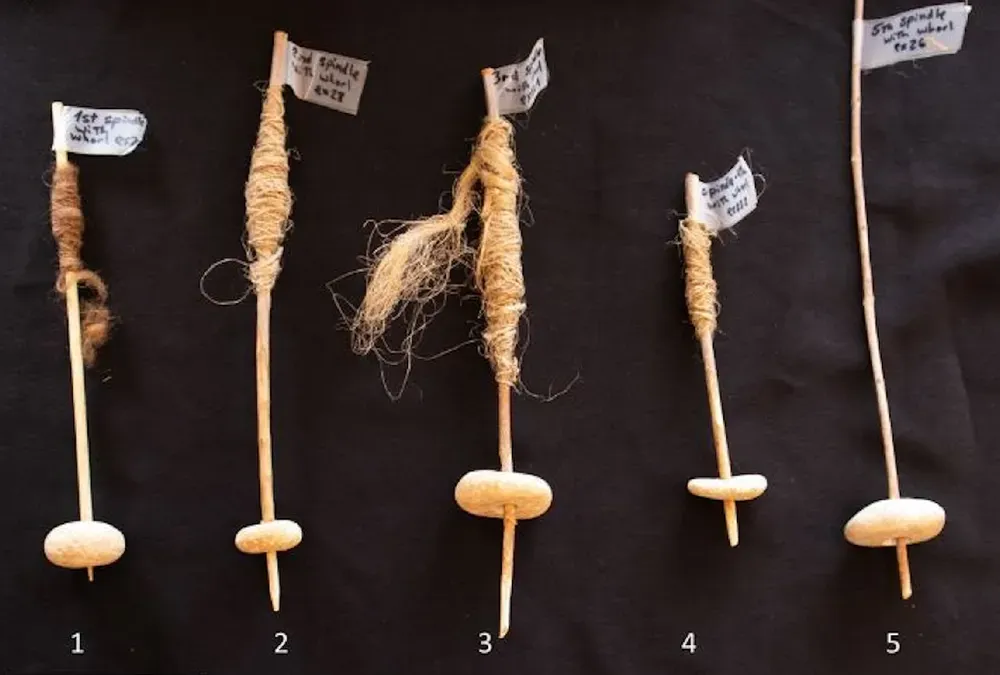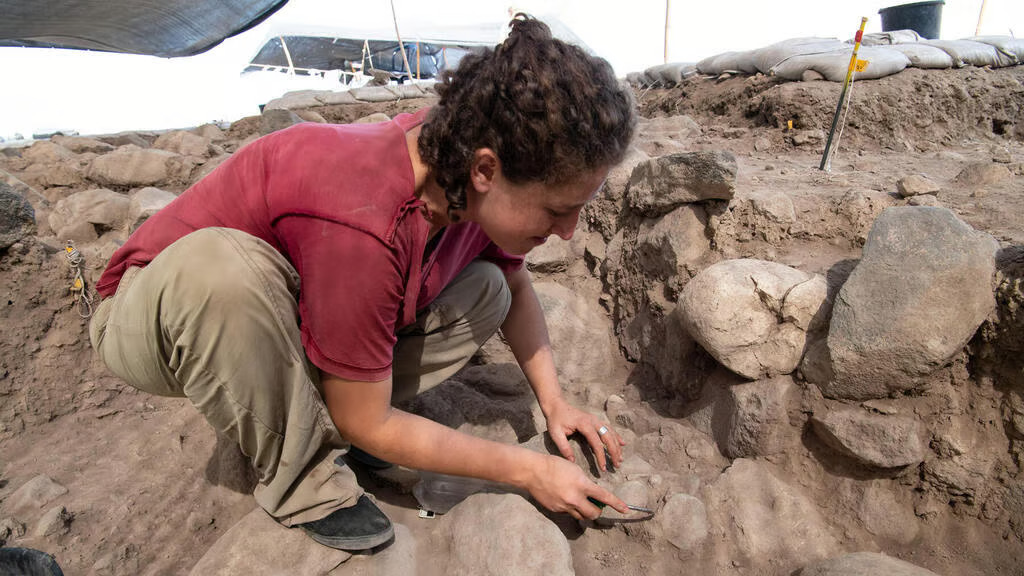Around 12,000 years ago, in a village on the shores of the Sea of Galilee called Nahal Ein-Gev II, ancient people developed an innovative method to spin thread more quickly and evenly. They used stone weights, or spindle whorls, which were round, flat pebbles with drilled holes in the center.
These whorls were attached to a spindle and helped convert the vertical drop of the spindle into rotational motion, allowing the user to twist fibers into thread with greater efficiency. This discovery represents the oldest known use of the drop spindle, a significant technological advancement in textile production.
The drop spindle technique itself was simple but effective. It involved attaching a weight to the end of a spindle and allowing it to drop, causing the spindle to spin and twist fibers together. This not only sped up the spinning process but also produced a more consistent thread.
The whorl’s mechanical design, which converts linear motion into rotational motion, may have laid the groundwork for other later innovations, including the wheel. Archaeologists Talia Yashuv and Leore Grosman from the Hebrew University of Jerusalem suggest that the same principle used in spindles was likely fundamental in the eventual development of the wheel.
Though spindle whorls were not directly the ancestors of the wheel, they helped people become familiar with the idea of using a circular object attached to a stick to create rotational motion. This knowledge was essential for other later inventions, such as the pottery wheel.

Ancient Drop Spindles at Nahal Ein-Gev: Pioneering Rotational Technology 12,000 Years Ago
By understanding how to manipulate rotational motion, early humans could apply the principle to transportation devices like carts. Yashuv and Grosman hypothesize that, over time, this principle was transferred from spindles to sleds, and eventually, the invention of the wheel followed.
The discovery of these spindle whorls at Nahal Ein-Gev II is significant, as it is the oldest known site where such artifacts have been found. However, the villagers there were likely not the first to develop the idea of using a circular object for rotation.
The site’s unique preservation of these stone tools may be due to the local abundance of soft limestone pebbles, which were easy to drill and carve. Though these whorls are the oldest known example, it’s possible that the concept of using rotation was already known elsewhere, but materials like wood or other perishable items left no trace in the archaeological record.
Interestingly, after the Nahal Ein-Gev II site, spindle whorls seem to have disappeared from the archaeological record for several thousand years. However, they reappear at a later site just a short distance away, suggesting that the knowledge of spinning with stone whorls may have been rediscovered.
This resurgence of stone spindle whorls, along with other innovations, eventually contributed to the development of the wheel. The understanding of rotational mechanics that began with the drop spindle thus became a key element in the progression of technology, paving the way for many significant inventions in human history.









































